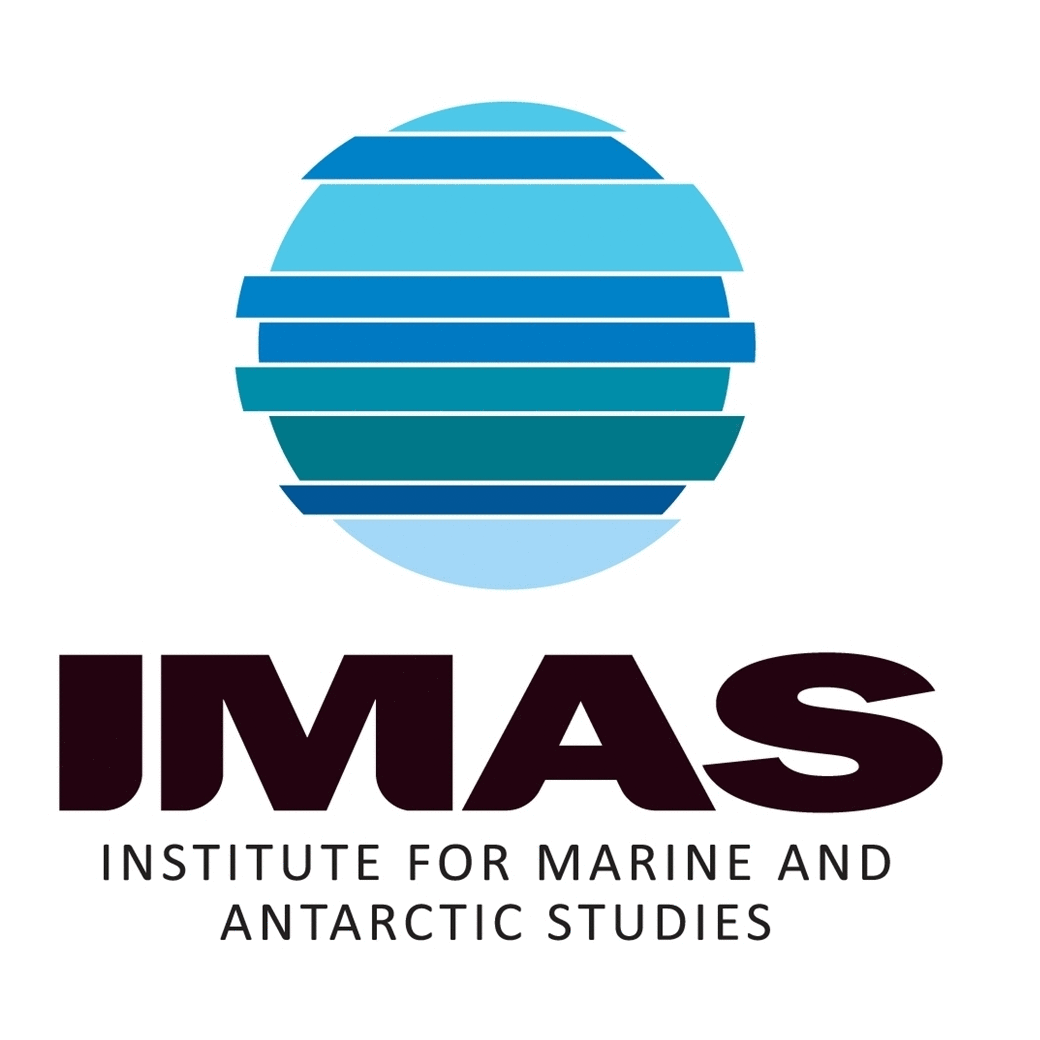2023
Type of resources
Topics
Keywords
Contact for the resource
Provided by
Years
-
Data from multibeam echosounder surveys taken as part of the Ningaloo Outlook project were classified into various seafloor cover types according to their hardness, rugosity and depth. The classifications were validated with towed video ground truth where it was available. This dataset describes two AOIs which are explicitly part of the Ningaloo Outlook Deep Reefs project. Substratum classifications were applied using multibeam backscatter angular response curves along with rugosity as input to a maximum likelihood classifier. See original metadata record(s) and associated attached documents for accuracy estimates, alternate classification techniques, and additional surveyed areas. https://doi.org/10.25919/kssa-5b46 https://doi.org/10.25919/kttc-x397 https://doi.org/10.25919/8m65-7k26
-

This record provides an overview of the NESP Marine and Coastal Hub project "Advancing national standards and best practices to monitor key marine values and pressures". No data outputs were generated by this project. -------------------- Standardised approaches to marine monitoring are critical for ensuring data consistency, transparency, and comparability across time, regions, and sectors. The development and application of national standards and best practices provide the foundation for monitoring the condition of Australia’s marine estate. As pressures on the marine environment increase, so too does the need for robust, inclusive, and nationally consistent monitoring practices. This project advanced the development and implementation of national best-practice standards to monitor the condition of priority values and pressures across Australia's marine estate. It built on previous work conducted by the NESP Marine Biodiversity Hub through the release of Version 3 of the Field Manuals for Marine Sampling to Monitor Australian Waters. This version introduced three new manuals for: (1) sampling microplastics in marine and coastal environments; (2) conducting knowledge, attitudes and practices (KAP) surveys with recreational marine users; and (3) use of the Benthic Observation Survey System (BOSS), a novel multi-camera drop platform for benthic imagery. Indigenous partners contributed to the development of the KAP and BOSS manuals, laying the foundation for future Indigenous-led monitoring initiatives. The project identified key barriers to adoption of the field manuals and developed a set of recommendations, included nominating the manuals for international endorsement, establishing governance mechanisms, securing long-term funding, and identifying priorities for future SOP development, such as offshore renewable energy monitoring. All materials were aligned with the Ocean Best Practices System to facilitate national and international uptake. A practical implementation plan was developed to guide the future development and maintenance of national standards; promote their broader adoption; and assess their effectiveness and impact in delivering priority monitoring activities. Outputs • Workshop and questionnaire report gauging the needs of scientists, Indigenous communities, and marine managers [written] • Scientific publication on marine best practice development [written] • New national standards for (1) drop cameras; (2) socioeconomic surveys; and (3) microplastics studies [written] • Implementation plan (final report) [written]
-

This record provides an overview of the NESP Marine and Coastal Hub Research Plan 2023 project "Guiding research and best practice standards for the sustainable development of Offshore Renewables and other emerging marine industries in Australia". For specific data outputs from this project, please see child records associated with this metadata. -------------------- Australia is entering a phase of rapid development of offshore renewable energy (ORE) projects and there is an immediate need to ensure these developments occur in a socio-ecologically sustainable manner. This project used a systematic approach to identify existing environmental and cultural data and best-practice monitoring standards to inform the sustainable development of ORE projects (primarily wind) in Australia and enabling regulatory decisions to be compliant with Environment Protection and Biodiversity Conservation (EPBC) Act and the Offshore Electricity Infrastructure (OEI) Act requirements. Focus areas of the data inventory were: • Seabed geomorphology and habitat characterisation. • Interactions with oceanography; eg the potential influence on coastal processes including sediment transport. • Interacting species and habitats; eg seabirds, shorebirds and migratory terrestrial birds, mammals, fish, sharks and rays, and invertebrates. • Potential impacts of installation, operation, and decommissioning; eg habitat modification (including dredging/impact to wetlands), installation noise, ongoing noise and electromagnetic fields, vessel activity, collision risk and barrier effects on birds. • Monitoring needs and associated best practices. • Indigenous communities affected by ORE development areas. This project ran in conjunction with a second project (https://www.nespmarinecoastal.edu.au/project/3-21) that addressed the immediate priorities of regulators, with a focus on the confirmed area of declaration for ORE off the east Gippsland coast, Victoria. Critical to informing the direction and focus of both these projects was guidance from an ORE Program Steering Committee comprised of representatives from relevant sections within DCCEEW, NOPSEMA, and MaC Hub partners involved in the project. Outputs • Inventory of existing information and associated sources for the following thematic areas: seabed geomorphology and habitat, oceanography, species and habitats, affected indigenous communities, ongoing monitoring needs and associated best practices, potential impacts of installation and operation [data inventory] • Final project report [written]
-
Repeat surveys of aquatic flora were conducted in Princess Royal Harbour in 1996, 2003, 2005 and 2006. This data is part of the 2013 report "Synthesis of seagrass mapping studies" conducted by the Water Science Branch of the Department of Water. Surveys were initially conducted by the WA Department of Water. The objectives of the study were to map the distribution of the different seagrass species found in Princess Royal Harbour and Oyster Harbour and to compare the distributions with that observed in previous studies (1996 and 2003). This data was acquired by the ACEAS Seagrass Group as part of the 2013 Australia-wide risk assessment of Seagrass. Surveys were conducted again in January and March 2021 by the Department of Water and Environmental Regulation as "Princess Royal Harbour Seagrass Survey". The datasets making up the 1996-2006 Princess Royal Harbour seagrass survey data are: WA_PrincessRoyal_seagrass_polygons - polygon dataset showing interpolated percentage cover of seagrass. This record provides access to the initial WA DoW surveys. See associated DWER records in Data WA catalogue for access to newer surveys at this site.
-
Aquatic flora surveys were conducted in the Leschenault Estuary in April 2009. This data is part of the 2013 report "Synthesis of seagrass mapping studies" conducted by the Water Science Branch of the Department of Water. Surveys were initially conducted by the WA Department of Water together with Geoscience Australia. The objective of these surveys was to collect baseline data on seagrass composition and distribution in key estuaries of southern and south-western WA. This data was acquired by the ACEAS Seagrass Group as part of the 2013 Australia-wide risk assessment of Seagrass. Surveys were conducted again 2015-2023 (February 2015, February and March 2016, February 2017, February and March 2018, February 2019, February and March 2020, February 2021, February and March 2022, and February and March 2023) by the Department of Water and Environmental Regulation as "Leschenault Estuary Seagrass Survey". The datasets making up the 2009 Leschenault Estuary seagrass survey data are: WA_Leschenault_SAV_sites - point dataset of species presence/absence and survey methodology at each site. WA_Leschenault_SAV_polygons - polygon dataset showing interpolated percentage cover in polygons derived from site points. This record provides access to the initial WA DoW surveys. See associated DWER records in Data WA catalogue for access to newer surveys at this site.
-

This record provides an overview of the NESP Marine and Coastal Hub Research Plan 2023 project "Improving data on the distribution and ecological value of temperate subtidal seagrass in tayaritja (Furneaux Group of Islands), Tasmania". For specific data outputs from this project, please see child records associated with this metadata. -------------------- Seagrass meadows are a dominant marine ecosystem of tayaritja (Furneaux group of Islands) in the north-eastern waters off Tasmania, with historical coarse mapping indicating extensive beds of Posidonia, Amphibolis, Hetreozostera and Zostera seagrass. The beds of Posidonia and Amphibiolis are potentially some of the largest and deepest extents found in temperate waters of Australia. Lack of data on the distribution and ecological value of these seagrass habitats represents a significant knowledge gap in understanding Australian wetland natural assets that provide a range of ecological, social, cultural and economic values. This project aims to map the extent and ecological composition, population structure and blue carbon value of the seagrass beds around tayaritja in partnership with the Tasmanian Aboriginal Centre. This project will help managers and the Aboriginal communities to understand the significance of these seagrass meadows and understand how they may be monitored. Outputs • Seagrass extent and composition map for Furneaux group [dataset] • Video and imagery of seagrass [dataset] • Final project report [written]
-

The datasets contain summaries of Queensland logbook data on catch and effort distribution for commercial fisheries in state marine and estuarine waters. The logbook data has been recorded and submitted to QLD Department of Primary Industries by commercial fishers. The data are aggregated to produce summaries of total catch and effort by fishery at a 6 nm resolution where 5 boats or more operate. For areas where less than 5 boats operate the data is shown as confidential. The data was mapped using 5 year - financial year periods; 2003/04 to 2007/08, 2008/09 to 2012/13, 2018/19 to 2022/23, and 1 year; 2022/23.
-

This resource includes the series of Aquaculture Site Maps produced for New South Wales and depicts the aquaculture lease area and state wide production totals. The data has been recorded and submitted to NSW DPI.
-
Snapper and King George whiting occurrence records were aggregated from the Reef Life Survey dataset, IMAS Archives, the Tassie Fish Frame Collection Program, Atlas of Living Australia and Redmap, in addition to pseudoabsences generated through space and time within the study extent, and matched to environmental covariates (sourced from Copernicus Marine) used for species distribution modelling for FRDC project 2018-070. The data described by this record contains fisher GPS information and is commercial-in-confidence. Please contact the Principal Investigator (alexia.grabalandry@utas.edu.au) or IMAS.DataManager@utas.edu.au for data access enquiries.
-

The datasets contain summaries of South Australian Aquaculture sites in state marine and estuarine waters.
 IMAS Metadata Catalogue
IMAS Metadata Catalogue